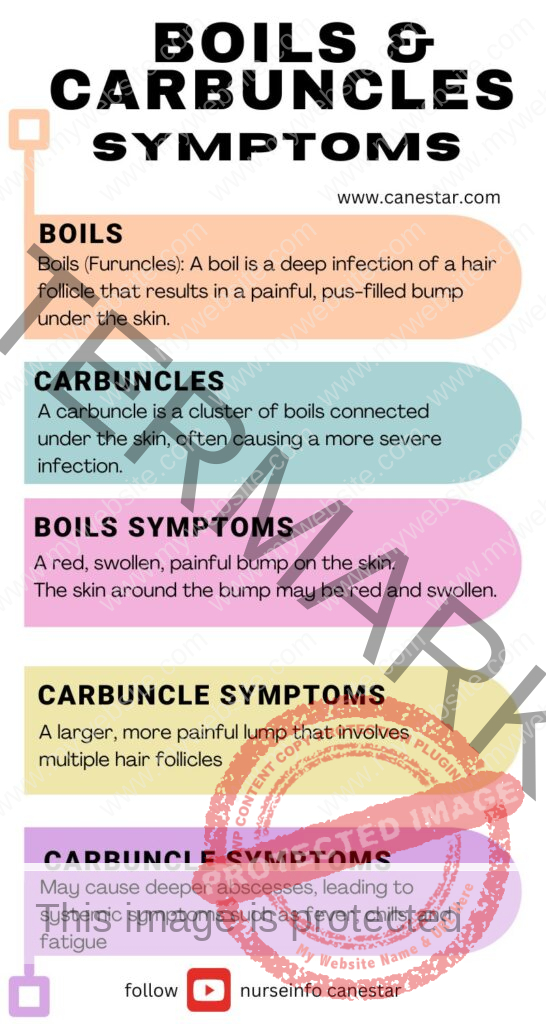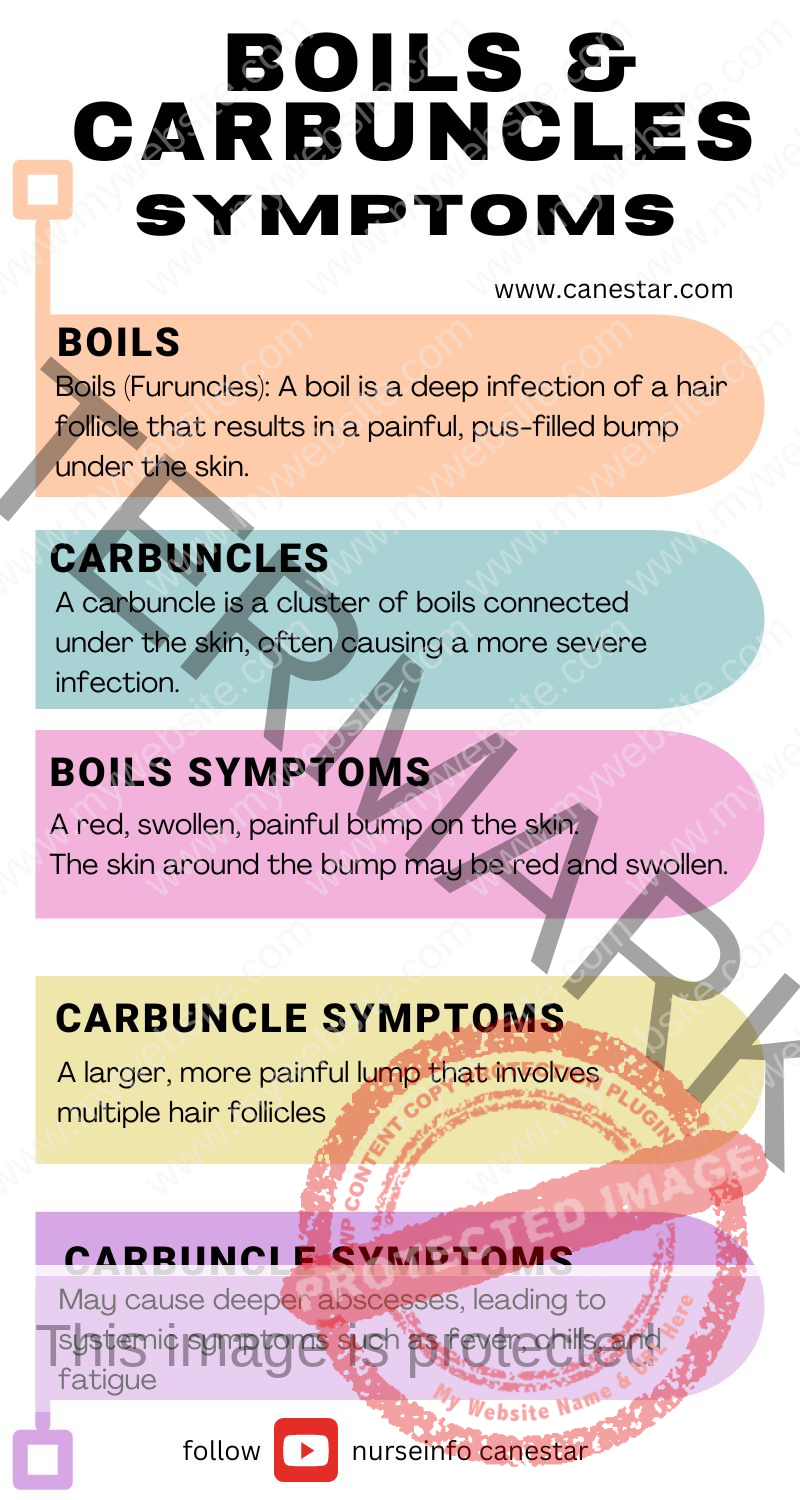BOILS AND CARBUNCLES SYMPTOMS – Definition, types, causes, signs and symptoms, diagnosis, treatment and prevention
BOILS AND CARBUNCLES SYMPTOMS – Definition, types, causes, signs and symptoms, diagnosis, treatment and prevention
Boils and Carbuncles
Definition
- Boils (Furuncles): A boil is a deep infection of a hair follicle that results in a painful, pus-filled bump under the skin.
- Carbuncles: A carbuncle is a cluster of boils connected under the skin, often causing a more severe infection.
Types
- Simple Boils (Furuncles): Single, isolated boils.
- Carbuncles: Multiple interconnected boils that form a larger mass.
Causes of Boils and Carbuncles
- Bacterial Infection: The primary cause of boils and carbuncles is a bacterial infection, most commonly by Staphylococcus aureus. This bacteria can enter the skin through hair follicles, cuts, or abrasions, leading to infection.
- Hair Follicle Inflammation: Boils usually start in a hair follicle, where the bacteria cause inflammation, leading to a buildup of pus and dead tissue.
- Risk Factors:
Poor Hygiene: Not maintaining proper skin cleanliness can increase the risk of bacterial infections.
Weakened Immune System: Conditions such as diabetes, HIV, or other immune-compromising diseases can make one more susceptible to infections.
Skin Conditions: Skin issues like acne or eczema can make the skin more vulnerable to bacterial invasion.
Close Contact: Being in close contact with someone who has a boil or carbuncle can increase the risk of developing the infection, especially in settings like households, schools, or athletic facilities.
Nasal Carriage of Bacteria: Some people carry Staphylococcus aureus in their nasal passages without symptoms, which can lead to skin infections when transferred to other body parts.
Signs and Symptoms
- Boils:
A red, swollen, painful bump on the skin.
The bump fills with pus over time, forming a white or yellow center.
The skin around the bump may be red and swollen.
Mild fever may occur.
Discomfort or pain that increases as the boil fills with pus.
- Carbuncles:
A larger, more painful lump that involves multiple hair follicles.
May cause deeper abscesses, leading to systemic symptoms such as fever, chills, and fatigue.
More likely to leave a scar.
Diagnosis
- Physical Examination: A healthcare provider typically diagnoses boils and carbuncles by examining the affected area.
- Culture Test: If the infection is severe or recurrent, a sample of pus may be taken for laboratory testing to identify the bacteria causing the infection.
Treatment
- Self-Care:
Warm Compresses: Applying warm, moist compresses to the area can help the boil drain and heal.
Keep Clean: Wash the area with antibacterial soap and keep it covered to prevent spreading the infection.
Avoid Squeezing: Do not squeeze or puncture the boil as this can spread the infection.
- Medical Treatment:
Incision and Drainage: For large or persistent boils, a doctor may need to drain the pus surgically.
Antibiotics: Prescribed if the infection is severe or if the patient has multiple carbuncles. Common antibiotics include clindamycin, tetracycline, and sulfamethoxazole-trimethoprim.
Pain Management: Over-the-counter pain relievers like ibuprofen or acetaminophen can help reduce pain and inflammation.
Prevention
- Hygiene: Maintain good personal hygiene by washing regularly with soap and water.
- Wound Care: Keep cuts and abrasions clean and covered until they heal.
- Avoid Sharing Personal Items: Do not share towels, razors, or clothing that may come into contact with the infected area.
- Manage Health Conditions: Conditions like diabetes or immune system disorders can increase the risk of infections like boils and carbuncles; managing these conditions can help prevent outbreaks.
Boils and carbuncles are typically manageable with proper care, but severe cases may require medical attention to prevent complications.

Disclaimer: This information is given for educational purpose. This information is provided for educational and informational purposes only and does not constitute providing medical advice or professional services. The information provided should not be used for diagnosing or treating a health problem or disease, and those seeking personal medical advice should consult with a licensed physician. Always seek the advice of your doctor or other qualified health provider regarding a medical condition.

